As a naturally occurring mineral compound composed of magnesium and sulfate, Epsom salt has long been highly valued in horticulture due to its potential benefits for plant health. Epsom Salt is particularly beneficial in case of tomato plants. This article will delve into the exact mechanisms through which Epsom Salt enhances the growth and vitality of tomato plants, focusing on nutrient uptake, disease resistance, and overall plant vigor, among others. By examining both scientific principles and practical applications with great detail, this guide seeks to give gardeners a full insight into how they can maximize their efforts towards growing tomatoes using Epsom salt.
Enhancing Nutrient Uptake in Tomato Plants
The efficacy of Epsom’s salt is dependent on its magnesium content. Magnesium is an essential element in chlorophyll, the molecule responsible for photosynthesis. When magnesium is deficient, photosynthesis slows down thus leading to poor plant growth and reduced yield of fruits. Growers can improve tomato plants’ nitrogen and phosphorus uptake by ensuring that their plants have enough magnesium through supplementing with Epsom salts. This will not only support the development of strong roots but also promote healthier foliage hence more vigorous plants and higher quality tomatoes.
Epsom Salt Boosts Magnesium Absorption
In tomato plants, epsom salt helps in increasing the absorption of magnesium through its root system mainly because it provides easy-to-dissolve form of soluble magnesium. The moment water dissolves Epsom salt and it is applied either through spraying or to soil, the magnesium ions (Mg²⁺) are taken up rapidly. The solubility of Epsom salt in water at 20°C is 364g/L (Lange et al., 2021). This allows for efficient transportation through the vascular system of a plant. Thus, it ensures that an adequate quantity of magnesium required for the synthesis of chlorophyll pigment, activation of enzymes, and nutrient movement within cells is maintained.
Moreover, studies have shown that between 1-2 tablespoons/ gallon water as foliar application or 1 tablespoon/foot plant height mixed into soil may provide enough magnesium supplementation (Reikosemura, 2016). Interveinal chlorosis or stunted growth which are symptoms associated with lack can be avoided if optimal levels can be retained by using Epsom salts. Consequently, this would foster general metabolic functions coupled with high photosynthetic efficiency for sustainable healthiness in tomatoes production.
The Role Played by Sulfate in Nutrient Uptake
Sulfate ions (SO₄²⁻) play an important role in the process of nutrient uptake by tomatoes as macronutrients and facilitators for other essential nutrients. Sulfate is mainly absorbed via roots and it is very crucial for synthesis of critical amino acids, proteins and enzymes. Another key soil parameter is sulfate concentration which should be within 10-20mg/kg to facilitate best plant growth (Du et al., 2014). It dissolves easily in water making it available to roots and also facilitates its movement within plants.
Sulfate can also enhance the ability of soil to take up other nutrients by increasing its cation exchange capacity. This is particularly helpful for absorption and utilization of micro-nutrients like iron (Fe), manganese (Mn) or zinc (Zn) that are necessary for enzyme activities and synthesis of chlorophylls. For instance, higher levels of sulfur in soils can increase the availability of iron, reducing the chances of iron chlorosis in tomato plants. Moreover, sulphur contributes to metabolism health because it forms part of some coenzymes as well as vitamins.
The effective application rate technically relies on types such as elemental sulfur or sulfate-based fertilizers that it comes in. In general, foliar sprays should have between 1-2% sulfur while correcting deficiencies may require 20-30lb/acre upon using soil amendments. Monitoring these levels through soil and tissue testing can ensure that sulfur levels are adequate but not excessive, thus preventing potential toxicity and ensuring balanced nutrient uptake.
Why tomatoes need extra magnesium
Magnesium is an indispensable macronutrient to tomato plants. As the central atom of the chlorophyll molecule, it plays a central role in photosynthesis. Proper magnesium levels are necessary for profitable production of chlorophyll, enabling efficient conversion of sunlight into energy. Tomato cultivation calls for soil magnesium content within 100 to 150 mg/kg.
Lack in magnesium may cause interveinal chlorosis where the space between leaf veins turns yellow while the veins remain green. This condition affects how effectively the plant can photosynthesize thus reducing overall growth and fruit yield. Plant vigor and productivity require enough magnesium supply.
This mineral also functions as a cofactor for many enzymatic processes involved in plant metabolism such as protein synthesis and energy transfer. Deficiencies can be corrected by applying Epsom salts (magnesium sulfate) at rates of 10-15 pounds per acre. The leaves thereby allow rapid absorption into plants that lack sufficient magnesium through their stomata if sprayed with a solution containing 2-3% magnesium sulphate.
Soil tests should be carried out regularly to monitor soil magnesium levels; this will help maintain optimal nutrient balance in themonitoring. Additionally, maintaining optimum pH of soils between 6.0 and 6.5 helps improve its uptake since nutrient availability is slow on too acidic or alkaline soils.
Promoting Healthy Growth and Development
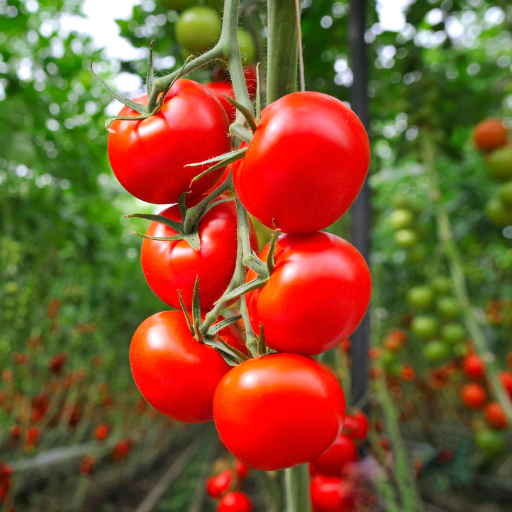
In order to ensure balanced provision of essential nutrients, proper sunlight and adequate water are necessary to promote healthy growth and development of tomato plants. Stably applying organic incorporation such as compost can facilitate soil structure improvement, enhanced nutrient availability and beneficial microbial activity. Tomatoes need consistent watering to maintain uniform moisture levels, meaning that blossom-end rot cannot take place. To save soil moisture and control temperature, use mulch. Air circulation is improved by pruning and staking tomato plants thus minimizing the likelihood of diseases. Additionally, changing crop species grown in a field alongside effective pest controls will minimize risk factors to plant health.
Enhancing Root Development with Epsom Salt
Magnesium sulfate, which is commonly known as Epsom salt is vital in enhancing root development in tomato plants by improving nutrient uptake and promoting vigorous growth. Epsom salt can be used as a soil amendment or foliar spray for optimum results. On a typical basis, when used as a soil amendment about 1 tablespoonfuls of Epsom salt for each foot the tomato plant is tall should be mixed into the soil at the base of the plants. This helps ensure that there is always some magnesium available for root development.
A foliar spray containing 2-3% Epsom salt solution may also be applied directly on leaves for faster absorption. This method works well especially during occurrences of acute magnesium deficiency symptoms. Make 1-2 tablespoons dissolve in one gallon of water then pour it over using a garden sprayer after dissolving the crystals this way you will have made your own foliar spray using Epsom salts this way it can easily be sprayed on plant leaves since it has been put inside an empty garden sprayer bottle. Best time for spraying foliage with the liquid mixture would either be early morning or late evening hours so that leaf burns will be minimized while absorption maximized.
Moreover; incorporating regular watering schedules with Epsom salt helps to maintain constant levels of magnesium. For healthy root systems and overall plant vigor, it is recommended that a drenching with 1 tablespoonfuls of Epsom salts dissolved in gallons of water be done every month. It is important to test the soil periodically for magnesium content so as to ensure that its levels are within the desired range thus preventing any possible deficiency that would affect root growth and health.
How Epsom Salt Strengthens Stems and Leaves
Magnesium, which is an important element in chlorophyll, is necessary for photosynthesis; hence stem strength as well as strong leaves depend on it. In addition to being a source of readily available magnesium for boosting photosynthesis efficiency, Epsom salt (MgSO4) makes stems stronger and foliage larger. Besides aiding in the synthesis of critical amino acids through sulfur provision, Epsom salts also improves nutrient absorption making sure that the plants feel nourished at all times but most especially they need strong ones like stems and leaves.
How Epsom Salt Increases Tomato Yield
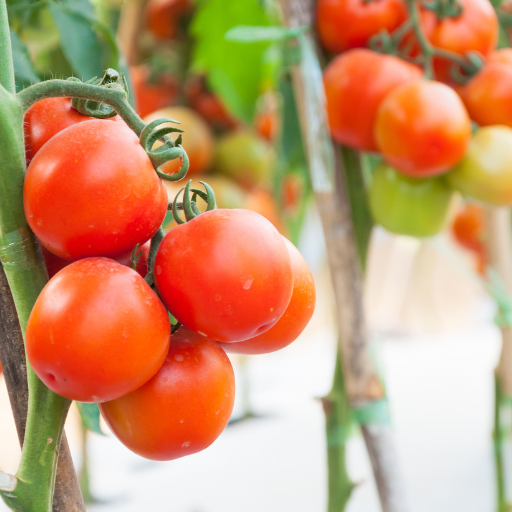
Tomato plants can produce more fruits when Epsom salt is applied on them because it improves various physiological processes. First of all, Epsom salt contains magnesium as one of its main components which is vital for chlorophyll production and photosynthesis resulting in vigorous growth and increased energy for fruit development. Secondly, sulfur in Epsom salt helps to make amino acids and vitamins that are important for fruit set and maturation. In addition, Epsom salt enhances the absorption of necessary nutrients like nitrogen, phosphorus, and potassium into the plant roots, leading to healthy vegetative growth of tomatoes with good yields. Thus, when applying Epsom salts as either a foliar spray or soil amendment during critical stages of crop development, highest level nutrition will be achieved among tomato plants hence greater productivity.
Boosting Fruit Size and Taste with Epsom Salt
To enhance the size and flavour of tomatoes; epsom salts provide a source rich in magnesium and sulphur for direct application to the plants. Magnesium is a key element in the production of chlorophyll which is essential for photosynthesis thus resulting in healthier robust plant growth. This increases photosynthetic activity directly affects the improvement of fruit formation process. Sulphur within epsom salts supports protein as well as enzyme synthesis facilitating plant metabolism and growth.Two fold advantages ensure that while increasingly manifested plants also bear nutritional enriched more tasteful fruits.Employment of epsom salts regularly either through foliar spray or soil amendment may lead to noticeable improvements both in size as well as taste profile concerning harvested fruit.
Minimizing Blossom End Rot Using Epsom Salt
Calcium deficiency coupled with erratic watering causes blossom end rot-a common challenge encountered during tomato farming. Despite not being a direct source for calcium, Epsom salt may be used to address this issue by enhancing general nutrient uptake by the plant system. It boosts calcium absorption along with other critically needed nutrients from the soil. Regular applications of Epsom salts as foliar sprays or soil amendments ensure robust supply of nutrients to the plants hence decreasing blossom end rot. It is recommended that one tablespoon of Epsom salt should be given per gallon of water, either as a soil drench or a foliar spray through out the growing season in order to provide consistent nutrient support for tomatoes. This type also improves the plant’s efficiency in transporting and using minerals leading to healthier fruit development and can prevent blossom end rot.
Boosting Photosynthesis Efficiency
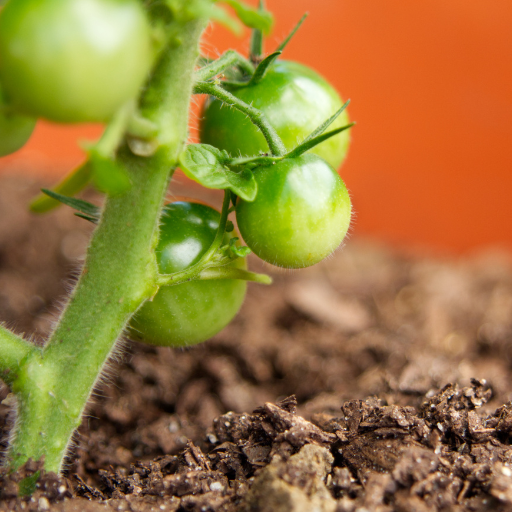
Photosynthesis is a very important process in plants, that depends largely on the presence of chlorophyll and helped by sufficient light, water and carbon dioxide. It does help to increase photosynthesis efficiency by providing the necessary magnesium which is an important element found in chlorophyll molecules. The main function of magnesium in photosynthesis is the absorption of light energy that provides fuel for the synthesis glucose out of CO2 and water. Through maintaining optimal levels of magnesium, Epsom salt therefore enhances chlorophyll production hence promotion of conversion light energy into chemical energy within a plant Improved photosynthetic capacity has been shown to not only enhance overall plant vitality but also improve crop yield and quality.
Role Of Magnesium In Chlorophyll Production
For instance, it constitutes the central atom within the chlorophyll molecule, making magnesium critical for chlorophyll production. Each molecule contains one magnesium ion, so this mineral is necessary for enabling plants to capture sunlight energy leading to synthesis through photosynthesis processes. One major role of magnesium ions is facilitating the transformation of absorbed sunlight energy by converting carbon dioxide and water into glucose and oxygen.
From a technical standpoint, its structural stability and function rely on its central position with respect to the C55H72O5N4Mg formula Mr (molar mass). The optimum Mg concentration in plants tissues typically ranges between 0.15%-0.25% dry weight basis percent (% dwt). Lack of enough amount results in yellow coloration in leaves, referred to as chlorosis, due to lack or insufficient amount of green pigment called chlorophyll that is essential for carrying out the photosynthesis process, thus affecting all other aspects related to health such as the rate at which leaves produce food.
To ensure sufficient supplies of magnesium nutrients, soil guidelines indicate that soil concentrations should range between 25 ppm-50 ppm while foliar application rates are generally recommended at 1 – 2% solutions. By doing regular soil tests and applying adequate amount of Epsom salt, good levels are maintained which correspondingly results in strong chlorophyll synthesis and plant development.
The Effects of Epsom Salt on Photosynthesis
Another factor in Epsom salt’s enhanced photosynthetic rate is that it is a fast source of magnesium required for chlorophyll manufacture. Once plants absorb magnesium from the salt, they use it to make chlorophyll molecules, hence making photosynthesis effective. This makes the plant capture light energy and easily convert it into chemical energy.
Moreover, according to agronomic studies, Epsom salt application can help increase the concentration of chlorophyll in leaves, thereby enhancing photosynthetic abilities. The recommended concentration for foliar application is a 1%- 2% solution mixed with water so as to provide enough magnesium to plants without causing toxicity problems. Soil application rates usually range from 20-30 Ib/A depending on the crop and soil test Mg levels.
Again, sulfur also supplied by Epsom salt plays a vital role in synthesizing amino acids as well as enzymes involved in growth regulation. Proper supplementation with MgSO4 will prevent or correct magnesium deficiencies resulting to interveinal chlorosis seen mostly on older leaves. Therefore, continuous use of this mineral element has revealed an increase in overall plant health, yield and quality through maintenance of robust photosynthesis together with nutrient balance throughout agricultural production systems.
Overall Influence on Plant Health
The incorporation of Epsom salt into farming practices greatly contributes to the overall health of plants through aiding in better nutrient uptake as well as rectifying magnesium deficiencies. Adequate magnesium levels enhance chlorophyll production necessary for efficient photosynthesis hence healthy, green foliage and improved energy production for growth. Additionally, sulfur from Epsom salt assists in forming essential amino acids and enzymes important to the body’s physiological processes. These nutrients promote root development, reduce susceptibility to diseases and pests and boost plant productivity and yield. By providing adequate amounts of both Magnesium and Sulphur, Epsom salts support nutrition needed by plants resulting to strong plant health and best crops yields.
Addressing Common Tomato Plant Issues
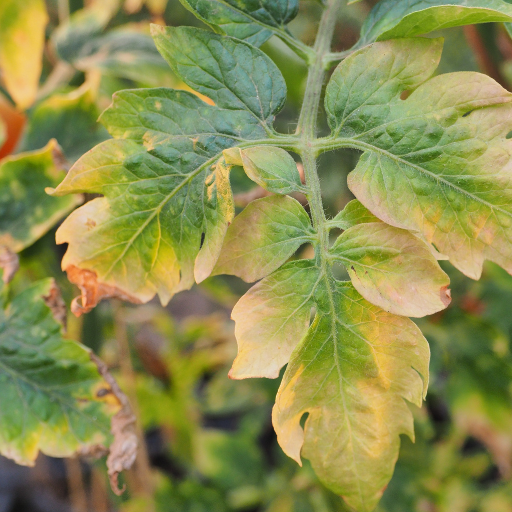
It is widely known that tomato plants can be affected by various common problems which may affect their health and productivity. One of the most common problems is blossom end rot, which results from lack of calcium and irregular watering. This condition can be avoided by keeping soil moisture uniform and using calcium supplements when necessary. Tomato blight is another challenge affecting tomatoes early and late in the season. Although it appears as dark spots on leaves, it spreads quickly destroying all foliage within a short period due to fungal infections. Some of these measures include crop rotation, use of disease resistant varieties and application of fungicides at required times. In conclusion cracking occurs on tomatoes due to too much water intake during wet conditions or when there is sudden increase in plant size as a result of excessive N application in nitrogen fertilizers. To prevent this problem maintain a constant watering schedule and mulch to conserve moisture in your soil. Dealing with such common issues before they happen yields healthier tomato plants with fruitful yields.
How Epsom Salt Prevents Yellowing Leaves
Yellowing leaves in tomato plants often mean chlorosis, a shortage of magnesium especially caused by nutrient deficiency. Epsom salt, otherwise known as magnesium sulfate, addresses this issue since it supplies the essential magnesium needed for the development of chlorophyll.
Photosynthesis could not be possible without chlorophyll which captures light energy converting it into chemical energy for plant life processes to occur normally. Epsom salt can thus be used via foliar spraying or incorporation in soil structure depending on the intended purpose or use (Foliar Feed). Dissolve one tablespoonful into a gallon of water for foliar spraying directly on leaf surfaces twice every 2 weeks (LawnMate). Mix 1-2 tablespoons per plant into the base if amending the soil (Khan). Additionally sulfur contained in it helps synthesize crucial proteins and enzymes thereby promoting plants’ general welfare. Epsom salt makes sure that tomatoes have enough magnesium and sulfur, which in turn helps the plant’s foliage remain green without any signs of chlorosis. This also enhances plant vigor and productivity since there is an improvement in appearance.
Managing Nutrient Deficiencies with Epsom Salt
Epsom salt contains magnesium and sulfur, which are effective elements for treating a number of nutrient deficiencies found in tomato plants. Plants use magnesium to convert sunlight into food via photosynthesis by ensuring adequate supplies of chlorophyll, thereby facilitating the efficient conversion of light energy to chemical energy required for growth and development (Foliar Feeding). On the other hand, sulfur is essential for the biosynthesis of proteins and amino acids (Khan).
To cure this condition dissolve one tablespoonful into a gallon of water then spray leaves with it at intervals not exceeding 14 days (LawnMate). This way, absorption through the leaf occurs quickly. Mix one or two tablespoons per plant around the base for soil application (Khan). Regular applications can help prevent deficiencies and promote healthier, more productive plants.
Epsom Salt’s Role in Disease Resistance
Using Epsom salt on tomato plants significantly raises their resistance levels towards various diseases. Mainly, magnesium contained in this substance strengthens cell walls protecting them from damage due to diseases caused by pathogens. Stronger cell walls ensure that there is no fungal attack as well as bacterial infections (Foliar Feeding). Furthermore, sulfur component acts as a fungicide against powdery mildew among other fungal diseases such as blight too.
It is good to note that some particular studies have found out that an over-all magnesium supply can decrease the occurrence of blossom-end rot by as much as 40% due to increased calcium uptake when there is enough magnesium. The best way for crop growers during the growing season to maintain their crop health at optimum level is through regular foliar applications of a magnesium sulfate (Epsom salt) solution, which requires dissolving one tablespoon per gallon of water at the interval of two weeks or more. Experimental data suggest that having enough sulfur in soil about 20-40 pounds per acre can reduce populations of pathogenic microbes and thus help plants immune system grow stronger.
Application Methods for Tomato Plants
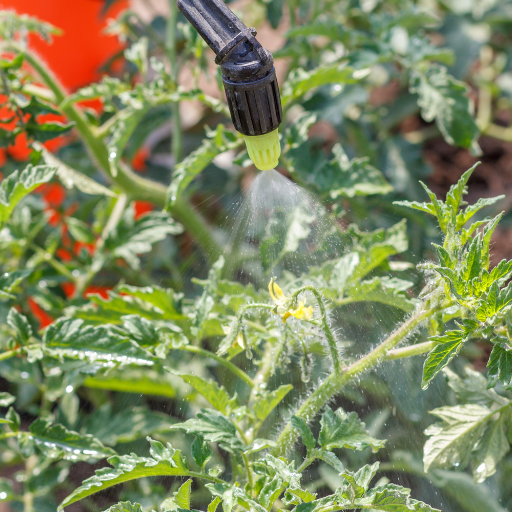
There are two effective methods of applying Epsom salt to tomato plants namely; foliar sprays and soil amendments. For leaf spraying, one gallon of water should be mixed with one tablespoon of Epsom salt and afterward spray it directly on the leaves. This method enables magnesium and sulfur to be absorbed quickly thereby addressing deficiencies faster. For example, the soil application involves adding one to two tablespoons per plant at the base, this should be done during planting and repeated after every four to six weeks throughout the growing period. Soil application improves root uptake of magnesium and sulfur which is vital for overall soil health and long-term plant resilience.
Best Practices for Application of Epsom Salt through Soil
In determining best practices that can be used in applying epsom salts to soils, some key considerations must be taken into account to maximize plant health as well as productivity. First, you must undertake a soil test so as to determine what levels of magnesium and sulfur are already there. This allows for adjustment of Epsom salt applications according to specific soil needs hence avoiding over-application or nutrient imbalances.
For large planting areas like garden beds, Epsom salt can be broadcast evenly across the surface at a rate of 1lb/100sqft area mixed with the top 6 inches of the ground. This ensures an even distribution of nutrients, thus promoting uniform growth throughout the plants.For tomatoes grown in containers, mix one tablespoon into each pot while transplanting, then reapply every six weeks.
Before an application it is good when the soil is adequately moist in order to maximize efficacy.Water generously after application to aid mineral absorption.Why should we not combine compost with Epsom salt because microbial activity will take place further increasing its structure into beneficial plant condition.Always adhering to recommended rates will prevent toxicity or nutrient competition within the profile.
Tomato Foliar Spray Techniques
Foliar spraying is an extra technique that aims to enhance nutrient absorption efficiency by directly delivering essential elements into the leaves of tomato plants. To make a foliar spray solution, mix one tablespoon of Epsom salt with one gallon of water. This concentration provides enough magnesium and sulfur without burning the leaves or causing mineral buildup on them.
Apply foliar sprays in the early morning or late afternoon when the temperature is cooler and the stomata are open all the way. This will result in maximum nutrient uptake. Also, applying it during these periods helps to reduce evaporation and scorching of leaves. The leaf surface must be completely covered by spraying the solution evenly across the area, including the undersurface, where nutrients can be absorbed best.
Throughout the growing season, reapply your foliar spray after every two weeks and keep adjusting frequency based on response from plants. Furthermore, combining Epsom salt with other foliar fertilizers is part of integrated nutrient management program which ensures compatibility and avoids negative interactions.Consider regular monitoring as well as accurate application rate so as to improve health condition of tomato plants for increased productivity.
When to Use Epsom Salt on Tomato Plants
The rate of Epsom salt application should be based on the needs of your tomato plants and soil conditions. As a rule, it is sometimes necessary to start by applying one tablespoonful of Epsom salt per foot plant height. This process can either be done at planting time by mixiting the salt with the soil r applied periodically as side dressings after every four to six weeks during the growing season.
For spray feeding, apply one tablespoonful of Epsom salt in a gallon of water every fortnight since this allows for direct absorption of nutrients through leaves. If signs show that there is deficiency in magnesium such as interveinal chlorosis or poor fruit formation then you may think about more frequent applications. In case these symptoms persist a diluted foliar spray can be used weekly but ensuring that your rates are not above recommended to avoid nutrient imbalances.
It is critical to monitor tomato plants and soil fertility status regularly using soil tests or leaf tissue analysis. Therefore, adjust the frequency of applications based on plant health observations and test results obtained. Following these recommendations and adapting them to your particular environment will help you maximize the benefits associated with using Epsom salts to improve the productivity and healthiness of tomato plants.
Frequently Asked Questions (FAQs)
Q: How does Epsom salt help tomato plants in the garden?
A: Epsom salt helps tomato plants by providing essential magnesium and sulfur, which are crucial for plant growth. Magnesium is vital for photosynthesis, while sulfur aids in the formation of proteins and enzymes.
Q: Why should I add Epsom salt to the soil when growing tomatoes?
A: Adding Epsom salt to the soil can improve nutrient absorption, prevent magnesium deficiency, and promote healthier plants generally. Magnesium helps with photosynthesis and boosts the overall health of tomato plants.
Q: How often should I use Epsom salt as a fertilizer for tomatoes?
A: Typically, it is recommended to use Epsom salt once every two weeks during the growing season. You can mix one tablespoon of Epsom salt with one gallon of water and apply it as a foliar spray or add it directly to the soil.
Q: What are the benefits of using Epsom salt over other fertilizers for tomatoes?
A: Epsom salt provides a natural source of magnesium and sulfur, which are crucial for tomato plant growth. Unlike some other fertilizers, it does not contribute excess nitrogen, which can lead to overgrowth of foliage at the expense of flower and fruit production.
Q: Can Epsom salt prevent common tomato plant problems like blossom end rot?
A: While Epsom salt alone may not prevent blossom end rot, which is typically caused by a calcium deficiency, it can help address magnesium deficiency, another common issue. To prevent blossom end rot, you might need to ensure an adequate supply of calcium through methods such as adding calcium nitrate or dolomite lime.
Q: Should I perform a soil test before adding Epsom salt to my vegetable garden?
A: Yes, performing a soil test is a good practice before adding Epsom salt or any other amendments. A soil test can help determine whether there is a deficiency in magnesium or sulfur, or any other nutrient imbalance that may need address.
Q: Are there any risks associated with using too much Epsom salt in the garden?
A: Adding too much Epsom salt can lead to excessive magnesium levels in the soil. This can interfere with the uptake of other essential nutrients and potentially harm plant health. It’s crucial to follow recommended application rates and monitor plant response.
Q: How do Epsom salts differ from other organic fertilizers?
A: Epsom salts provide a specific boost of magnesium and sulfur, whereas other organic fertilizers might offer a broader range of nutrients. Epsom salts can be a good supplement to a balanced fertilization regime, especially if your soil specifically lacks magnesium or sulfur.
Q: Can I use Epsom salt in combination with other organic fertilizers like manure or coffee grounds?
A: Yes, Epsom salt can be used alongside other organic fertilizers. Combining Epsom salt with manure or coffee grounds can offer a balanced nutrient profile for your garden plants.
Q: Is Epsom salt effective for other plants besides tomatoes and peppers?
A: Yes, Epsom salt can benefit various plants that require magnesium or sulfur. However, it’s essential to know the specific needs of your plants, as not all plants will benefit equally from Epsom salt application.






